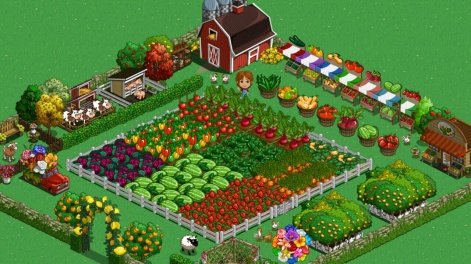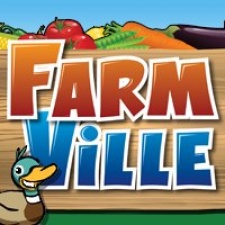Opening my phone during maths class to comfort a lonely cow was just one of the ways I got into trouble at school.
In 2009, Californian gaming giant Zynga unveiled FarmVille, the social agricultural simulator powered by Adobe Flash Player. The core mechanics are simple: you manage a farm, you point and click on the tasks that are flashing at you, and you have a surprisingly good time doing it.
The game enjoyed a sizable three-year reign as the prize pig of Facebook until its inevitable sequel, FarmVille 2, released in 2012.
On December 31st, 2020, Adobe discontinued Flash Player, the software that powered countless internet games of this century’s formative years. FarmVille was one such title, and unavoidably, the original version of Zynga’s homestead handiwork was sent off to slaughter.
In 2010, FarmVille enjoyed a brief stint as an iOS mobile app, available across the iPhone, iPad and the almost-forgotten iPod Touch. Of course, FarmVille 2 is built from sterner stuff, and is still available as a dedicated mobile app. FarmVille 3 is also currently in the works, with an eye to create something a little different that captures old and new farm fans alike. But as the sun sets on the original, let’s take a look back at what made FarmVille revolutionary.
A social moo-vement
I was not an early adopter of Farmville, but my mother was. While I was glued to the first-person shooters and RPGs of the time, my mother immersed herself in digital cows and coins. In 2020, the creator of that casual cow game has a net worth of $7 billion, several eye-watering acquisitions under its belt, and a position as a pioneer in mobile gaming. Little did I know that my mum - and many other mums, aunts and grandmas - were part of an untapped demographic worth millions.
FarmVille began quietly, like most unassuming successes. Zynga acquired virtual world builder MyMiniLife in May 2009 and set four of its engineers to work on a farming game. By this point, Zynga had recognised the interest in Facebook integration from the success of its first title, Zygna Poker. Zynga co-founder and chairman Mark Pincus noted: “players wanted to see their friends and do things together”.
On its launch on June 19th, 2009, FarmVille became an instant hit, hitting one million daily active users (DAUs) in its first week.

However, FarmVille was not the first of its kind. There were already a handful of successful agricultural simulators on the market and Pincus knew that was where Zynga needed to be, with little regard for claims that the company was simply ‘copying’ other developers. In a 2012 company memo reported by Gamesbeat, Pincus claimed: “we don’t need to be the first to market, we need to be the best in market”.
At its peak in March 2010, FarmVille had 83.7 million monthly active users (MAUs) , and 34.5 million DAUs. In 2010, Facebook itself had 400 million active users. Over 20 per cent of Facebook’s user base was playing FarmVille regularly, with over eight per cent playing every day. 2010 was a milestone year for Facebook too - the company had just started to turn cash flow positive, it made a series of acquisitions, and the year concluded with a blockbuster biopic detailing Zuckerberg’s creation of the social behemoth.
By 2012, Zynga was responsible for 12 per cent of Facebook’s entire revenue stream. The success of FarmVille undoubtedly paved the way for both Zynga’s and Facebook’s evolution into social games, and games as a service as a whole. It also changed the game for monetisation.
Farms, friends, freemium
Even back then, putting in-game advancement behind real-world social barriers was not a new technique. Nintendo pioneered that move in titles like Animal Crossing and Pokémon. The only way you could get another type of fruit for your village or bag yourself a Gengar was through actively trading items with someone else.
Millions of users were not only beguiled to constantly play because they saw others playing - they were also compelled to spend real money in order to get ahead.
FarmVille’s tactics are similar, but come with a slight variation. Most of the in-game progression happens organically, eventually; but if you want something to happen faster, your choices are to spam friends and family with requests to log into the game and help you out - or spend real money to speed things up.
While FarmVille was at its core free-to-play, the game offered incentives and faster progression in exchange for in-game currency.
On the day of the closure, Pincus said that “people thought of FarmVille as some sort of Etch-a-Sketch”, and that it gave adults a “place to invest and express themselves, and be seen by people in their lives as creative”. FarmVille positioned itself as a game for people with no time to play games. Its accessible mechanics and ‘drop in, drop out’ functionality made it attractive to non-gamers, and its aggressive attachment to Facebook’s news feed created a huge sense of inclusion for those playing, and a bigger sense of FOMO (fear of not missing out) for those that weren’t.
And that sense of missing out, or feeling behind on your own progression, was what sparked a tidal wave of in-game purchasing. In February 2013, FarmVille’s in-game revenue alone hit $1 billion. Millions of users were not only beguiled to constantly play because they saw others playing - they were also compelled to spend real money in order to get ahead, creating a decadent (and frequently despisable) new business model for mobile and flash games.
The rise of hypercasual can also be traced back to FarmVille. While the term itself is a recent coin, the core design stretches back a couple of decades. Hypercasual gameplay is defined by micro-action - games designed to be played in bite-sized sessions with the most minimal of actions. Users can check-in, tend to any outstanding tasks with a few easy taps and clock out within a few minutes.
Other examples of hypercasual include Flappy Bird, often cited as the first real game in the genre to gain traction. Companies like Voodoo and Kwalee were also key figures in this movement, with titles such as Helix Jump and Draw It, respectively.
FarmVille is a little more strategic than the above, yet it's still designed to be accessible to basically anyone - and it still is.

Sowing the future
In more recent years. Zynga’s priorities and strategy have shifted. FarmVille is no longer at the forefront of the wave it created, but remains a strong title in a sea of competitors.
Zynga is now an acquisition giant, fueling studios such as Small Giant Games, the developer behind Empires & Puzzles; Toon Blast maker Peak Games; and more recently, Rollic, creator of Word Pop. Speaking to PGBiz, Zynga president of publishing Bernard Kim stated: “the more challenges the marketplace poses, the more opportunity for consolidation where you can bring two companies together and they equal something much bigger together”.
But the company’s core values have not altered, with the same goal being to offer the same social experience that it crafted with FarmVille. Kim also added: “fundamentally, we want to be where the players are”.
While Zynga was not the first to tap into this extraordinary movement, it is undoubtedly a pioneer, remaining so to this day. Whether you dabbled in digital dairy or simply blocked the fam spam from afar, FarmVille paved the way for the winning integration of social media and casual games.





















